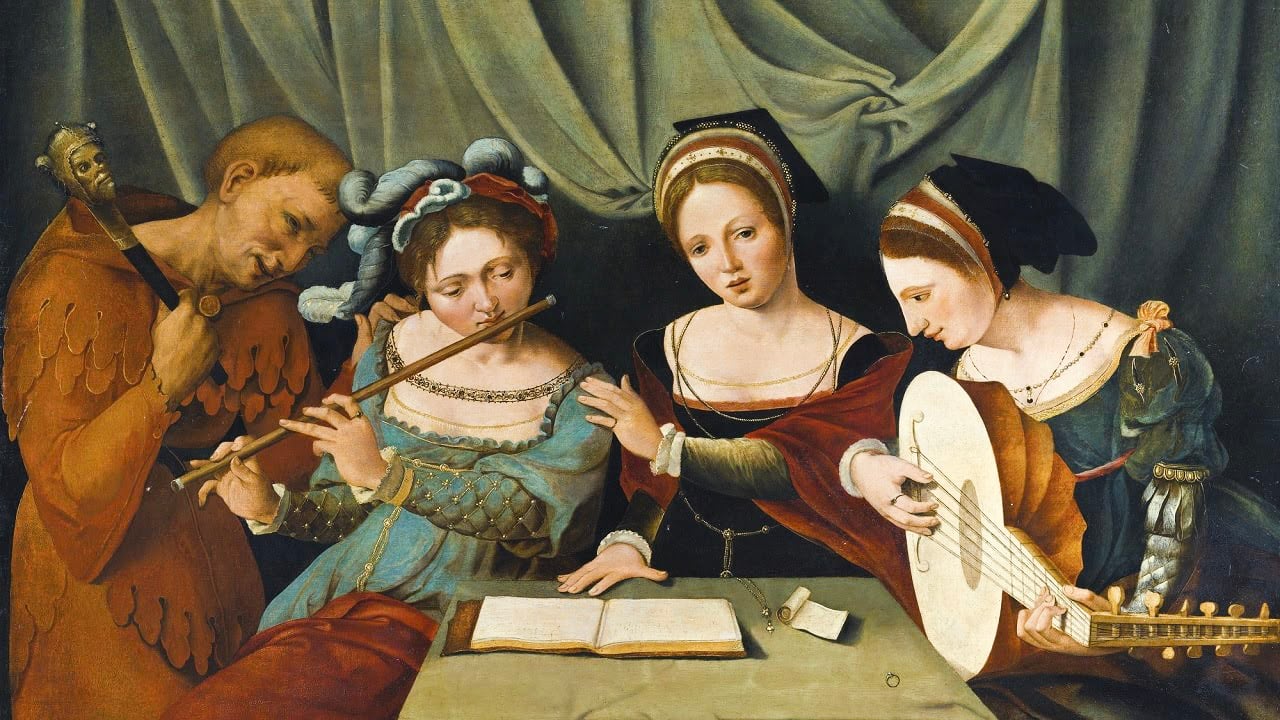As we reach the conclusion of our journey through the Renaissance - a period marked by artistic brilliance, intellectual revival, and cultural transformation - it becomes clear that music was not only a reflection of its time but a driving force in shaping it. While earlier chapters have explored sacred and secular traditions, instrumental development, and the expressive power of polyphony, this final chapter turns to the musical inventions and intellectual innovations that redefined how music was created, shared, and understood.
These advancements - spanning from music printing to early opera - transformed not only the art form itself but the role of the composer, the reach of musical ideas, and the very system of sound and harmony that underpins Western music today.
Part 6 - Musical Inventions of the Renaissance Era


📖 1. The Printing Press and the Democratisation of Music
The invention of music printing was a landmark moment in the history of music. In 1501, Ottaviano Petrucci published Harmonice Musices Odhecaton, the first printed collection of polyphonic music using movable type - a method where individual symbols (like notes, clefs etc.,) were cast on separate metal pieces, arranged, and reused for printing. Music, once transmitted by hand and confined to churches or courts, could now be reproduced with speed and accuracy. The result:
Musical literacy expanded across Europe.
Composers gained recognition as their works reached wider audiences.
Students and amateurs could access repertoire once limited to elite institutions.
It was the beginning of music as a shared, global language.

🎵 2. Polyphony and the Art of Musical Texture
The Renaissance era elevated polyphony into a sophisticated and expressive medium. Composers carefully wove multiple, independent melodic lines into coherent, beautiful harmonies.
Key techniques included:
Imitative Counterpoint, exemplified by Josquin des Prez, in which musical phrases are passed from voice to voice with subtle variation.
Fauxbourdon, a simplified harmonic method for sacred settings, is a technique of harmonizing a melody using parallel first-inversion chords, with voices moving mostly in sixths to create a smooth, triadic texture.
Word Painting/Text Painting, where composers shaped musical lines to match the meaning of the lyrics - for example, ascending scales for words like “rise” or dissonant clashes for “pain.”
Through these tools, music gained emotional depth and intellectual complexity.
📜 3. Advancements in Music Theory and Notation
As compositional methods advanced, so did the theoretical tools used to analyse and teach them.
Mensural Notation enabled precise rhythmic control, crucial for complex polyphony.
Modal Theory was systematised, with theorists like Gioseffo Zarlino exploring the characteristics of modes and laying groundwork for the major-minor tonality that would emerge in the Baroque.
Proportional rhythms and time signatures began to take modern form, standardising performance practices.
These changes allowed for clearer communication among musicians and broader consistency in musical education and performance.


🎭 4. The Birth of Opera and Dramatic Expression in Music
In the late Renaissance, composers began to experiment with music as a dramatic storytelling medium. These innovations marked the origins of opera.
The Florentine Camerata believed that ancient Greek tragedies were sung, not spoken. Their ideas inspired monody, a style of solo singing with instrumental accompaniment focused on emotional clarity.
Jacopo Peri’s Dafne and Euridice became the first operas, merging narrative and music into a unified dramatic experience.
Intermedi, staged musical interludes between acts of spoken plays, helped audiences transition to fully sung drama.
Though still in its infancy, opera reflected the Renaissance’s humanist spirit - placing human emotion and expression at the centre of art.
🎹 5. Tuning the Future: The Path to Equal Temperament
As musical language grew more harmonically adventurous, tuning systems needed to adapt. Traditional systems like just intonation worked well in limited contexts, but new compositions demanded flexibility across keys.
Renaissance theorists began experimenting with:
Tempered tuning, adjusting intervals to reduce dissonance.
Early equal temperament, a method of dividing the octave into 12 equal parts - laying the groundwork for modern keyboard tuning.
Though not fully adopted until later, these developments reflected the growing intellectual rigour and scientific curiosity of Renaissance music.
🧠 6. The Composer as Artist
Perhaps one of the most defining shifts of the Renaissance was the emergence of the composer as an individual artist, not just a craftsman.
Josquin des Prez achieved widespread fame during his lifetime, with works circulated and celebrated across Europe.
Composers began signing their names to their music and publishing under their own authority.
A new emphasis on personal style and artistic voice emerged, turning composers into cultural figures in their own right.
This was a turning point in the history of music: for the first time, composition was recognised as an act of self-expression, not merely service to the church or court.
✨ Conclusion: A Sound Reborn
The Renaissance was not merely a rebirth of old ideals - it was a redefinition of what music could be. Technological breakthroughs like music printing expanded access and education. Polyphonic innovations deepened emotional and structural complexity. Dramatic forms like opera gave voice to human emotion in unprecedented ways. And composers stepped into the light - not just as servants of tradition, but as creative individuals shaping the future.
Together, these innovations laid the intellectual and artistic foundations of the Baroque era and beyond. As we leave the Renaissance, we do so with a deeper understanding of how music evolved not only in sound, but in purpose, reach, and meaning.